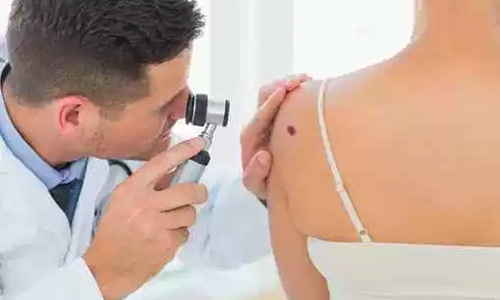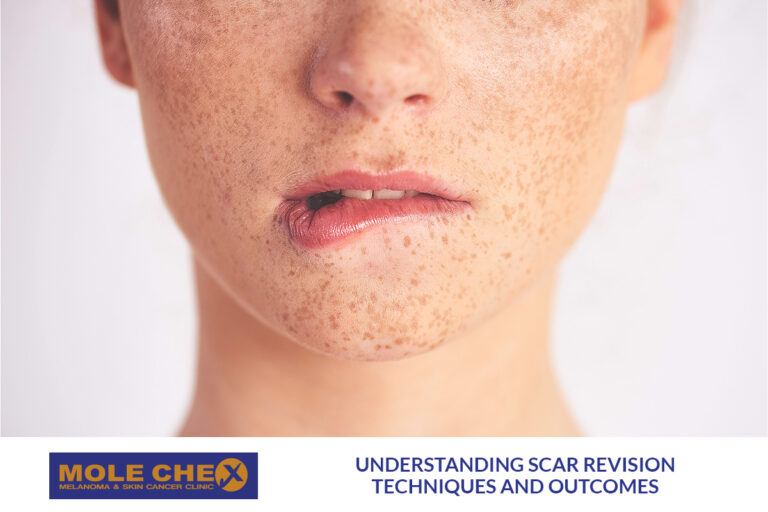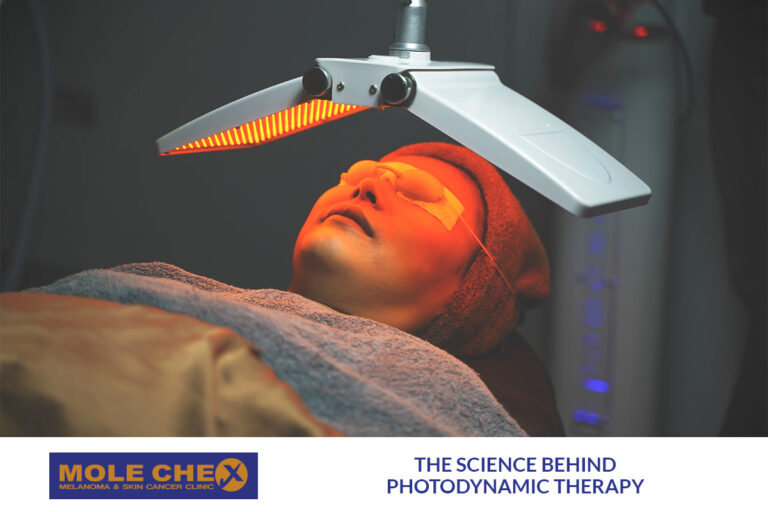Home » Patient Information » Melanoma
Melanoma Warning Signs
Finding melanoma at an early stage is crucial; early detection can result in a 100% cure.
Look for anything new, changing or unusual on both sun-exposed and sun-protected areas of the body. Melanomas commonly appear on the legs of women, and the number one place they develop on men is the trunk. Keep in mind, though, that melanomas can arise anywhere on the skin, even in areas where the sun doesn’t shine.
Most moles, brown spots and growths on the skin are harmless – but not always. The ABCDEs can help you detect melanoma.
The first five letters of the alphabet are a guide to help you recognize the warning signs of melanoma.
A is for Asymmetry. Most melanomas are asymmetrical. If you draw a line through the middle of the lesion, the two halves don’t match, so it looks different from a round to oval and symmetrical common mole.
B is for Border. Melanoma borders tend to be uneven and may have scalloped or notched edges, while common moles tend to have smoother, more even borders.
C is for Color. Multiple colors are a warning sign. While benign moles are usually a single shade of brown, a melanoma may have different shades of brown, tan or black. As it grows, the colors red, white or blue may also appear.
D is for Diameter or Dark. While it’s ideal to detect a melanoma when it is small, it’s a warning sign if a lesion is the size of a pencil eraser (about 6 mm, or ¼ inch in diameter) or larger. Some experts say it is also important to look for any lesion, no matter what size, that is darker than others. Rare, amelanotic melanomas are colorless.
E is for Evolving. Any change in size, shape, color or elevation of a spot on your skin, or any new symptom in it, such as bleeding, itching or crusting, may be a warning sign of melanoma.
If you notice these warning signs, or anything NEW, CHANGING or UNUSUAL get checked now.

- 268 Ipswich Road, Annerley QLD 4103
- 07 3891 3044
-
Monday to Friday - 9.00 am – 5:00 pm
Weekends and Public Holidays - Closed
- Shop 1096C/1151 Creek Road, Carindale QLD 4152
- 07 3892 1985
- Monday to Friday - 9.00 am – 5:00 pm
- Note : Clinic is located on the outer part of the shopping center next to the CBA & ANZ bank, please take the Aldi/Big W entrance to the shopping center off Creek rd.
- 262 Old Cleveland Road, Coorparoo QLD 4151
- 07 3397 1999
-
Monday to Friday - 9.00 am – 5:00 pm
Saturday: 9.00-3.00
Sunday and Public Holidays - Closed
No referral needed
Open Saturdays, early morning and late evenings



